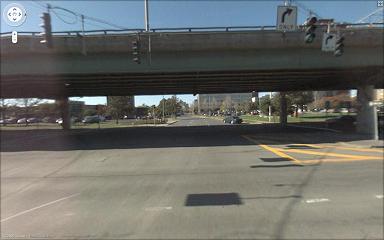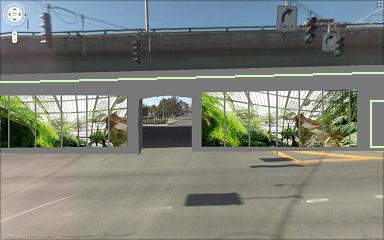My hometown of Syracuse, NY was disfigured when interstate highways were blasted right through its heart, between the university and downtown, flattening a neighborhood that had once been home to moderate-income African-Americans. Their strong web of churches, businesses, and other associations reached back to the time of the Underground Railroad, when Syracuse had been an important center of Abolitionism. In place of this old neighborhood, there appeared bleak expanses of tarmac and a modernist museum by I.M. Pei that showed no regard for its context. The city’s population has since fallen–more because of de-industrialization than urban “planning”–and now many of its fine old Victorian homes are abandoned and boarded up. There’s even a program under which the municipal government removes condemned houses and gives the property to the neighbors so that they can have suburban-sized yards.

Above is a major Syracuse cross-street, with Interstate 81 right through it. I know this is fanciful, but what if we put glass walls on either side of the space under the highways and filled it with plants? Syracuse is a very cold place–often the snowiest city in the whole country. Imagine warm, green, spaces for recreation under those highways. If the area became attractive, the neighborhoods on either side might fill again, taking advantage of scattered Victorian relics.

(With apologies for my poor perspective and draftsmanship.)